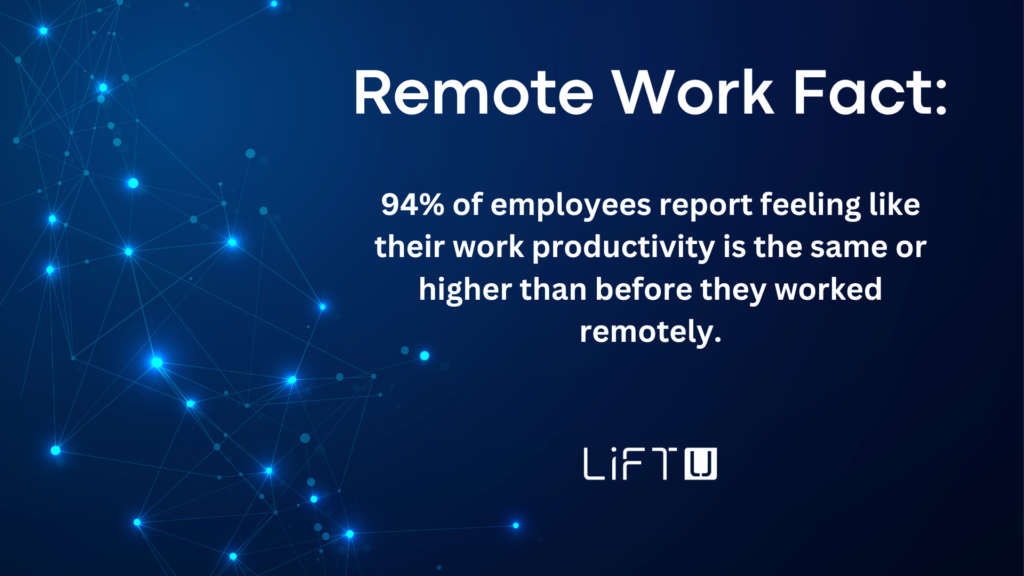If you work in an office, stop and consider how much time each day you commit to getting ready, driving there, walking to your desk then spend throughout your day having side conversations with co-workers and leisurely strolls to the restroom or break room. Not to mention, the time it takes for a lunch break if you take one and then the return trip home.
The bottom line is collectively you waste a lot of time working in person that you can harness more productively if your commute is from your bedroom to your home office. Just the getting ready part is minimized because you only need to change out of your pajamas if you have an on-camera virtual meeting, and with the right lighting you really don’t need a lot of make-up to look presentable on your web cam. So, for the make-up wearers among us, you just saved yourself a lot of face prep time!
Research backs this up. In a study of 800 employees, Human Resources and workplace benefits consulting firm Mercer found that 94% of companies said their employees were just as or even more productive working remotely compared to working from the office.

But why? One word: flexibility. According to a report by Future Forum, employees with full schedule flexibility report nearly 30% higher productivity and a 53% greater ability to focus than workers with a fixed schedule. It makes sense. Some of us are night owls and can accomplish a lot more when the kids are asleep and we’re not getting pinged by co-workers. Others, the early risers, can hammer out a lot first thing when they are bright-eyed and bushy-tailed in contrast to the afternoon hours.
If time is money, then a lot more of it is potentially being wasted by an in-person workforce that is doing nothing wrong per se. They are simply following the social norms in a professional setting that call for a lot of chit-chat or exchange of pleasantries, unannounced or unexpected office drop-ins and travel to and from meetings—both on foot or by car—that can all be avoided for the most part when working remotely.

